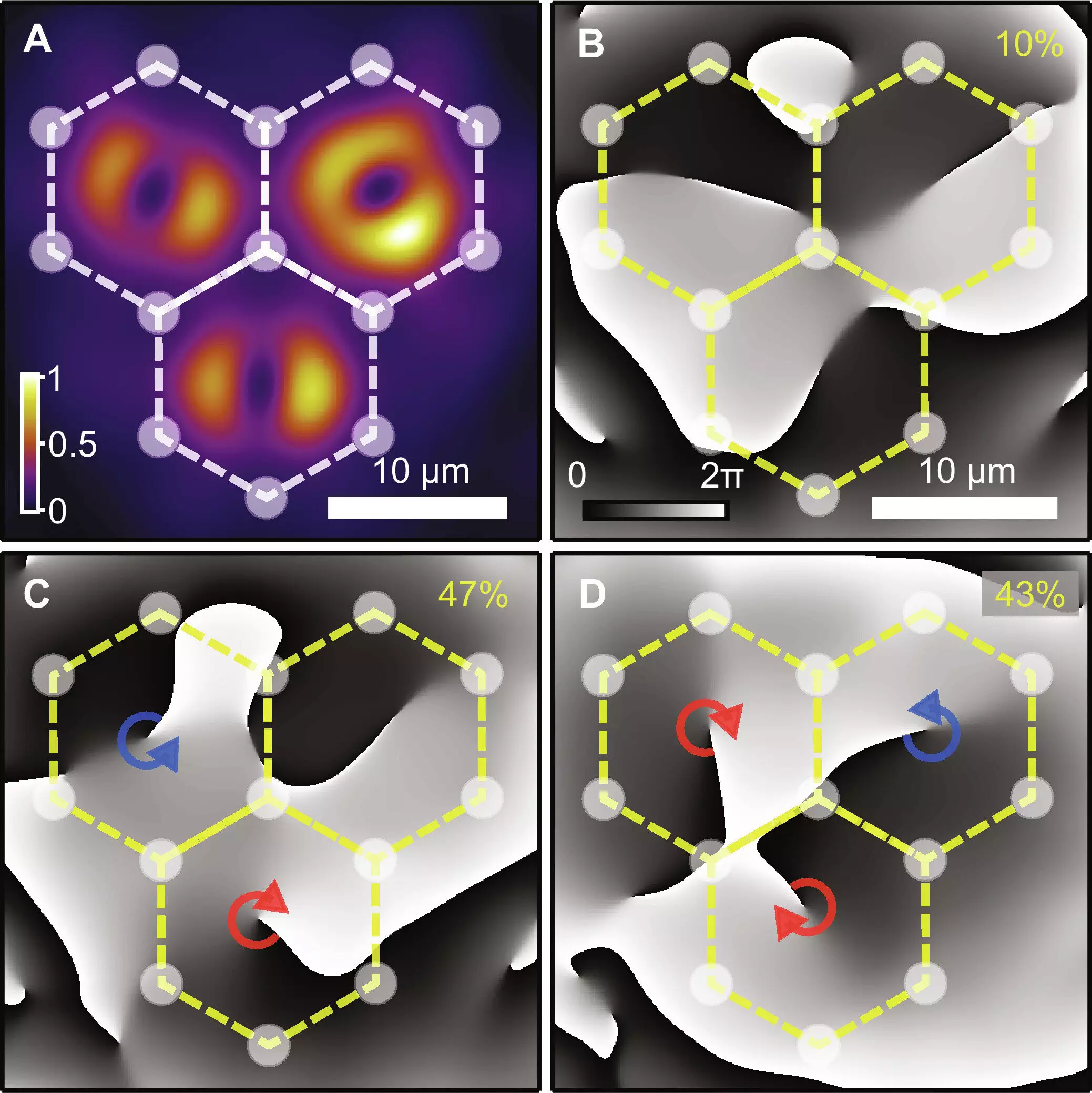The recent research conducted by scientists from Skoltech, Universitat Politècnica de València, Institute of Spectroscopy of RAS, University of Warsaw, and University of Iceland has shed light on the spontaneous formation and synchronization of multiple quantum vortices in optically excited semiconductor microcavities. This groundbreaking study, published in Science Advances, unveils the remarkable phenomenon of polariton quantum vortices in neighboring cells of optically generated lattices exhibiting an opposite topological vortex charge, which the researchers describe as being “antiferromagnetically coupled.”
The experimental setup involved creating structured artificial lattices consisting of coupled polariton vortices within semiconductor microcavities. This innovative platform offers a new approach to studying and simulating condensed matter systems by utilizing the orbital angular momentum of the polariton condensate in place of traditional spin angular momentum. The researchers conducted their experiments at Skoltech, specifically in the Photonics Center’s Hybrid Photonics Laboratory, under the leadership of Professor Pavlos Lagoudakis.
By optically exciting a semiconductor microcavity sample with a patterned laser beam using spatial light modulation, the team was able to generate a triangular lattice with 22 cells containing trapped polariton condensates, each carrying a single-charge vortex. This technique, developed in collaboration with colleagues from the University of Southampton, enabled the precise shaping of the laser beam into an array of tightly focused Gaussian beams arranged in a hexagonal lattice structure.
The researchers observed that, at small lattice constants above a critical excitation power, the polaritons condensed within the lattice cells. In individual cells, the trapped condensate exhibited vortex states with nearly equal probabilities for both vortex and antivortex configurations. However, in pairs of neighboring cells, the vortices interacted to form stable solutions with opposite topological charges, resulting in either vortex-antivortex or antivortex-vortex pairs. Subsequent analysis focused on triangular cell structures and larger triangular lattices of vortices.
Theoretical contributions from Dr. Helgi Sigurðsson from the University of Warsaw played a crucial role in understanding the behavior of the polariton condensates within the vortex lattice. By examining the orbital angular momentum of each condensate across multiple lattice cells and correlating these measurements with the low-energy configurations of the Ising spin Hamiltonian, the research team uncovered a significant correlation between the observed orbital angular momentum and the antiferromagnetic Ising spin states.
The study on the spontaneous formation and synchronization of quantum vortices in semiconductor microcavities represents a significant advancement in the field of quantum physics. By leveraging optical excitation techniques and innovative experimental setups, the researchers were able to explore the complex dynamics of polariton condensates in structured artificial lattices. The findings from this research open up new avenues for investigating condensed matter systems and offer valuable insights into the behavior of quantum vortices in driven-dissipative systems.



Leave a Reply